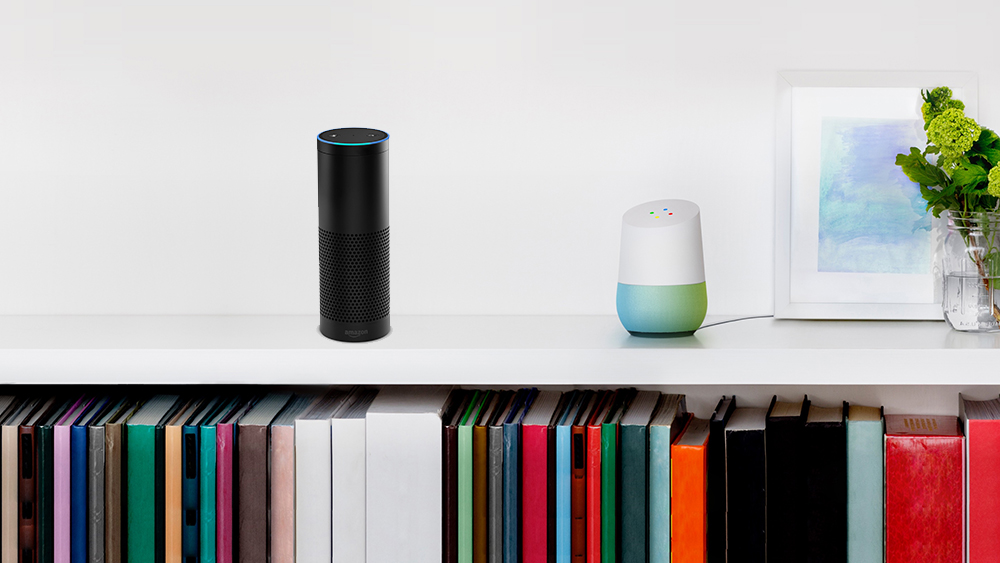Searching for IoT devices that look great? We have the answer
There's no point in getting rid of wires to replace them with something ugly


I'm really impressed with this latest Aeon Labs sensor, and I think Josh will be too. It certainly isn't one of the bland ugly boxes that he wrote about. But just in case he still isn't satisfied, let's keep plundering the box of stuff from Vesternet. Next out is another device from Aeon Labs, but this one is completely different. Known as the Recessed Door Sensor, it actually sits inside the door.
Through the door
Size-wise, it's about the size of a tube of lipstick. So with this one you make a 19mm hole into the edge of your door, to a depth of 65mm, and a matching hole in the frame 15mm deep to hold the magnet. With the door closed, the sensor is completely invisible!
Sounds perfect, doesn't it? Exactly what Josh needs? Well, maybe. There are a few "gotchas" with this sensor. First, it only works in doors, not windows, due to the depth of the hole needed. I guess the clue is in the product name: Recessed Door Sensor. Second, it's only really suitable for wooden doors. It might fit some uPVC doors, but many don't have the required depth; in those that do, the sensor wouldn't be held securely because it would be sitting in a void. Drilling into a uPVC door can also damage the seals and drainage channels built into the structure. I'd stick to wooden doors with this one.
I also don't think it feels as robust as the other sensors here. In particular, to change the battery you need to pull a PCB from the main body of the device, but it's a tight fit (especially once the sensor is wedged into its hole in the door), and there's nothing to easily grab hold of. The temptation is to take a pair of pliers to the circuit board, but if you look closely, it has components right up to the edge. A simple design tweak could have solved this, but without that my advice is to loop some thin string around the underside of the board before inserting it. That way, you can just pull the cord to remove the innards from the tube when you next need to change the battery.
Incidentally, at first sight the battery might look identical to the ER14250 in the Fibaro, but in this case it's a CR2 they're slightly different in size, and the CR2 is much more commonly available due to its use in many photographic products. The battery should be good for around a year. It's a Gen5 Z-Wave product, which helps with that battery life and also the range.
To be fair, although I've criticised the fiddly construction of the sensor, this doesn't affect the day-to-day operation. Once fitted, it works really well, and like I said above, with the door closed it's totally invisible. That's exactly what Josh wanted, so should suit his needs perfectly. Provided, of course, that he has wooden doors. Oh, and a house with no windows...
Sign up today and you will receive a free copy of our Future Focus 2025 report - the leading guidance on AI, cybersecurity and other IT challenges as per 700+ senior executives
Strip joint
Which brings me to the last item in the box a Sensative Strip. A slightly strange name, perhaps, but at least it's easier to remember than an obscure model number. The device doesn't come from one of the existing home automation manufacturers; it started life as a crowdfunded product on Indiegogo.
There are a number of things that set the Sensative Strip apart from the others here, with the first being its form factor. I think it looks like an emery board (nail file); my wife suggested a long lolly stick. It's less than 3mm thick, and is designed to fit into the gap between a door or window and its frame.
In practice, most doors and windows, especially double-glazed units, will have sufficient space. If, for some reason, the strip doesn't fit then it will still be possible to mount it externally, like a traditional sensor, and because of the slim profile it's almost invisible especially if mounted above a door, rather than to the side.
Unlike the other sensors here, there's no reed switch. The Sensative Strip uses an AMR sensor. In fact, it uses two of them but more on that in a moment. And, also uniquely among this group, the battery isn't replaceable. It's built in, non-rechargeable, and the manufacturer reckons it's good for around ten years of use.
It goes without saying that a device as innovative as this uses Gen5 Z-Wave. It's waterproof, too that's important if you use it on windows that might be left open when it rains.
I mentioned that the device has two AMR sensors. One is used for the main open/closed detection, and the other for programming the device. With the other sensors here, you have to press a button to put them into pairing mode; with the Sensative Strip, you pass a secondary small magnet (which is supplied) over a control zone on one end of the strip. If I was to be picky, such programming is probably the weak spot of this device, but it's hard to be critical of a device that is as brilliant and, indeed, as different as this one.
Of all of the sensors mentioned here, I suspect the Sensative Strip will be the one that's most pleasing to Josh's aesthetic sensibilities, and his desire for non-intrusive automation sensors.
Thanks for the brilliant question, Josh. It's been an interesting investigation. And thanks to Vesternet, too, for its help.
This article originally appeared in PC Pro magazine
Paul runs a specialist digital agency called CST Group where he helps create websites and web-based tools, specialising in high-end hosting and managed cloud computing. If you've ever booked a meal in a pub or dealt electronically with a solicitor, you may well have used one of his systems.
Paul has also been writing for PC Pro for decades. Not quite issue one, but not far off. He writes about all sorts of tech things including gadgets, the Internet of things, building and hosting websites, single board computers like the Raspberry Pi, home automation, energy efficiency and pretty much anything else he's interested in. One month his column might be monitoring the output of solar panels using IoT kit and the next it could be debugging complex SQL queries in a CRM system.
You can reach him directly at pcpro@ockenden.com or @PaulOckenden
-
 Google Home vs Amazon Echo vs Apple HomePod vs Samsung Galaxy Home: Alexa skills blueprints now available to UK users
Google Home vs Amazon Echo vs Apple HomePod vs Samsung Galaxy Home: Alexa skills blueprints now available to UK usersVs Amazon make 22 templates available for custom skills
-
 Smart home mobile apps vulnerable to takeover
Smart home mobile apps vulnerable to takeoverNews Researchers find that apps to control devices in the home could be easily hacked
-
 How Google Home and Amazon Echo will convince people smart homes aren't useless
How Google Home and Amazon Echo will convince people smart homes aren't uselessAnalysis IoT industry figures believe that people are not yet ready for a connected life


